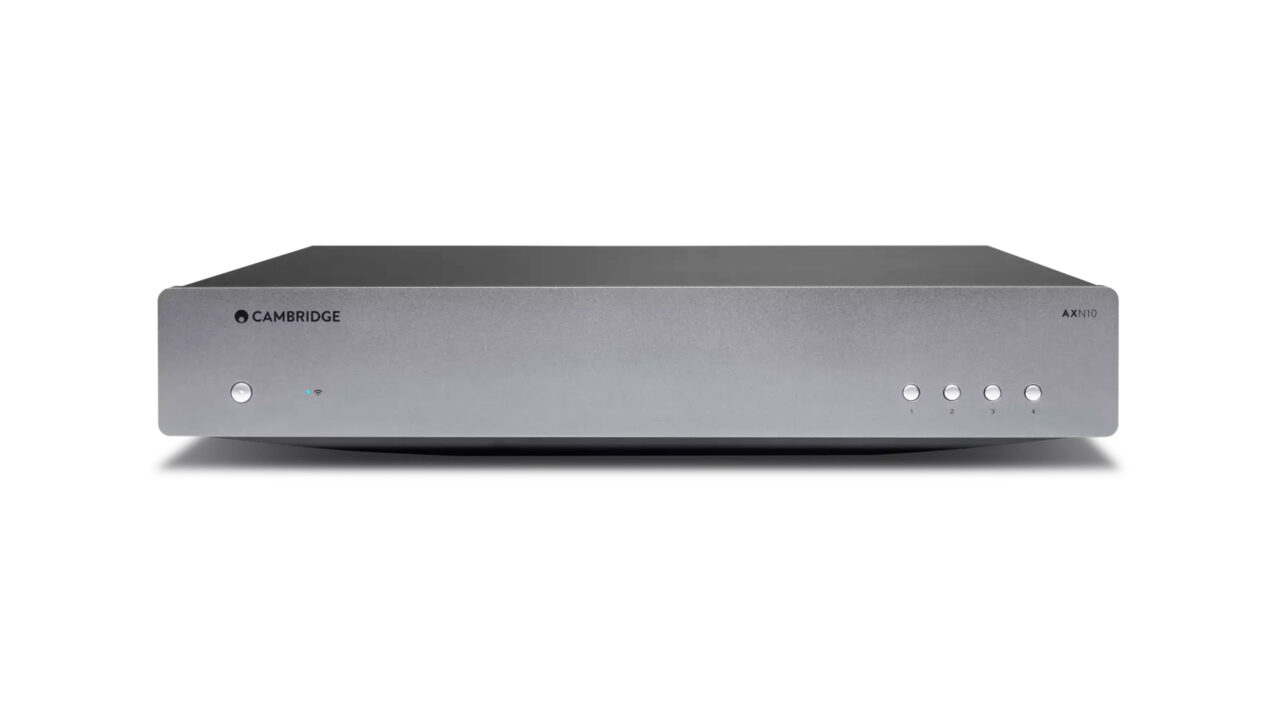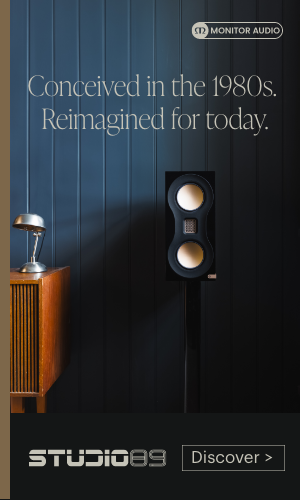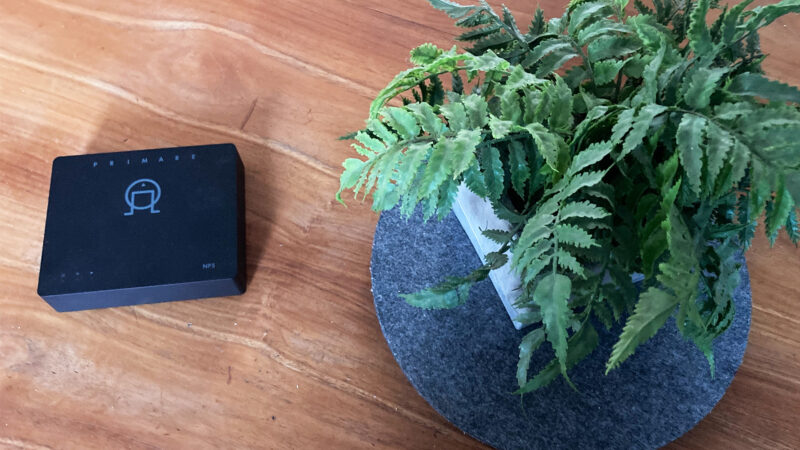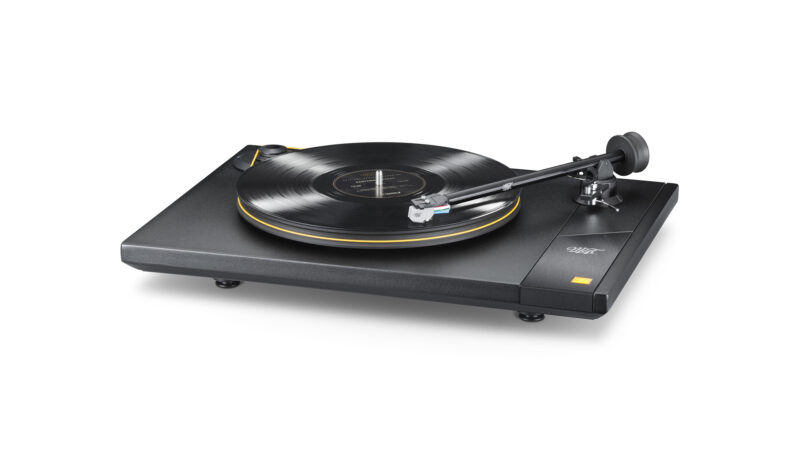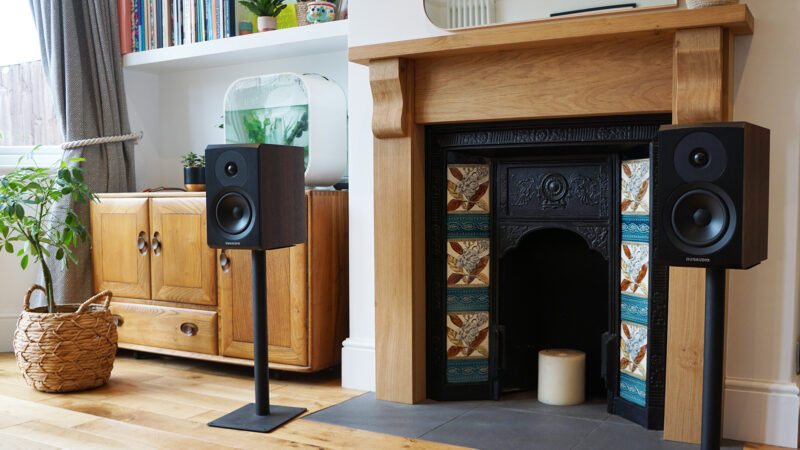If you squint a bit and take a liberal approach to missing letters, ‘Cambridge Audio’ is a perfect anagram for ‘cracking value’, which have been its watchwords for decades.
Such is its reputation for offering high-end rivalling products at mid-market prices, it’s hard to find any audio fan with a few years in the game who’s not owned (or still owns) a treasured CA product. I’ve had a John Westlake finessed CD4SE in my second system for decades, with no intention of moving it on.
Fast forward to now and the brand has continued to set out its stall across all price points and products from all in one players to turntables (belt and direct drive) and, of course, its flagship Edge electronics range, designed to go toe to toe with the finest hifi gear on the market.
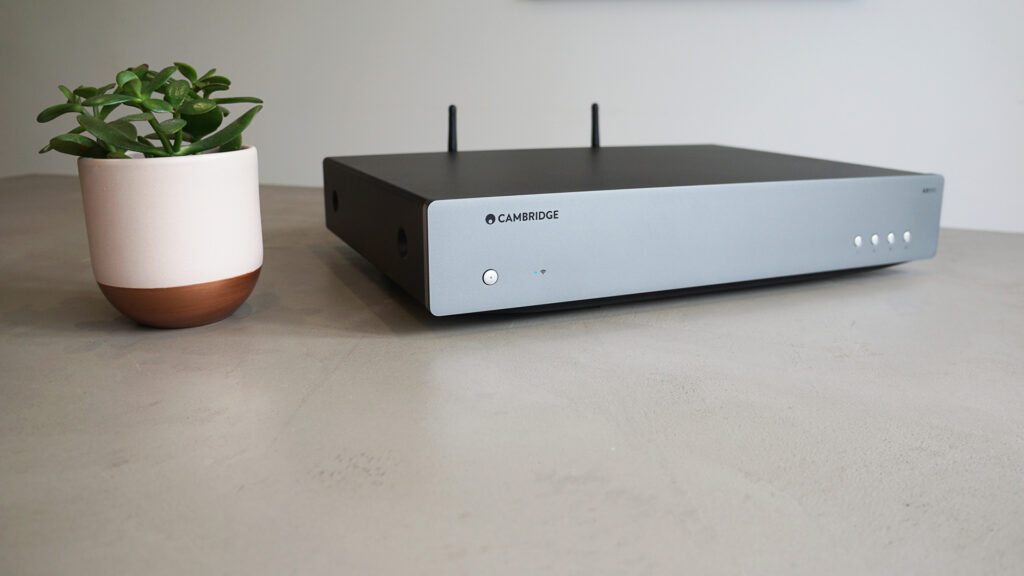
Brushed lunar grey coloured 10mm thick front panel takes the AXN10’s build a step up from its price rivals
Thankfully the brand has also been just as focussed on digital audio over the years, investing heavily in DACs back in the day, followed by streaming hardware and the all important software that goes with it in more recent times.
All bases covered
The AXN10 on test here is one of four standalone network players in Cambridge’s arsenal, with the Edge NQ leading the charge at £5k, followed by the CXN V2 at a much more accessible £799.
Next is the AXN10 on test here, priced at £449 (down from £549), which makes it the same price as the MXN10 player that sports an identical feature set in a half width box, giving you alternative options for system matching should you be tight on space or prefer accommodating full width separates. Of course a larger chassis also means greater isolation for the AXN10’s internals by default, which is never a bad thing in audio terms.
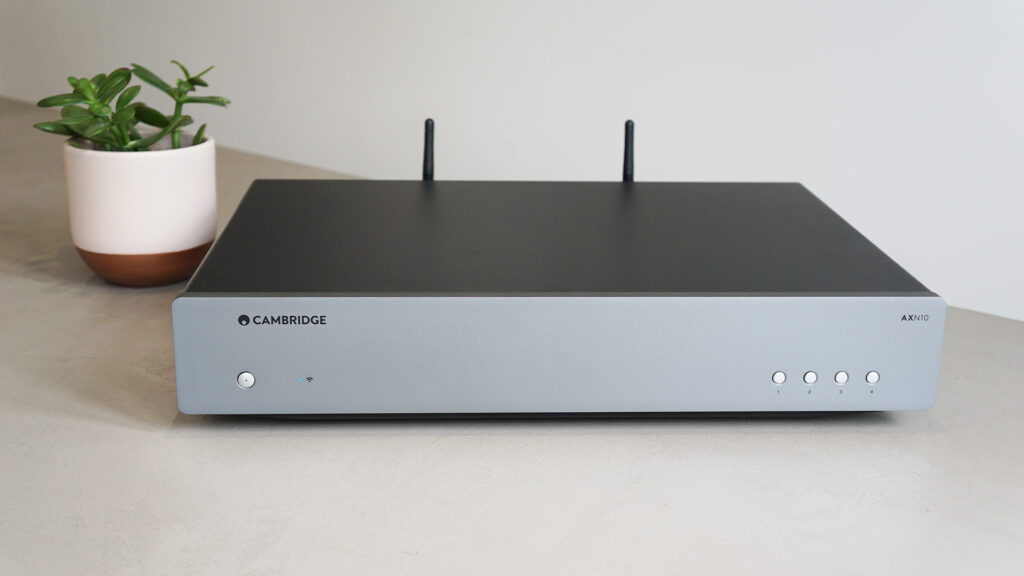
Designed as a full width product to accompany the brand’s AX range of amps and CD players, the AXN10 houses the same internals as the MXN10 network player but in a beefed up box
The AXN10’s spec sheet is thankfully what you’d expect for a network player of today, with support for Bluetooth 5, internet radio, Spotify Connect and AirPlay 2, plus Chromecast, Tidal and Qobuz all built-in. It’s also Roon Ready for easy browsing of your digital music files.
All of its source music is fed through an in-house Gen 4 Module, which includes an ESS SABRE ES9033Q DAC chip capable of handling hires files up to 32-bit/768kHz PCM and DSD512.
There’s no old school remote control but who needs one when you can access Cambridge Audio’s longstanding StreamMagic app, which lets you connect to your Tidal, Qobuz and Deezer streaming accounts alongside a host of other settings.
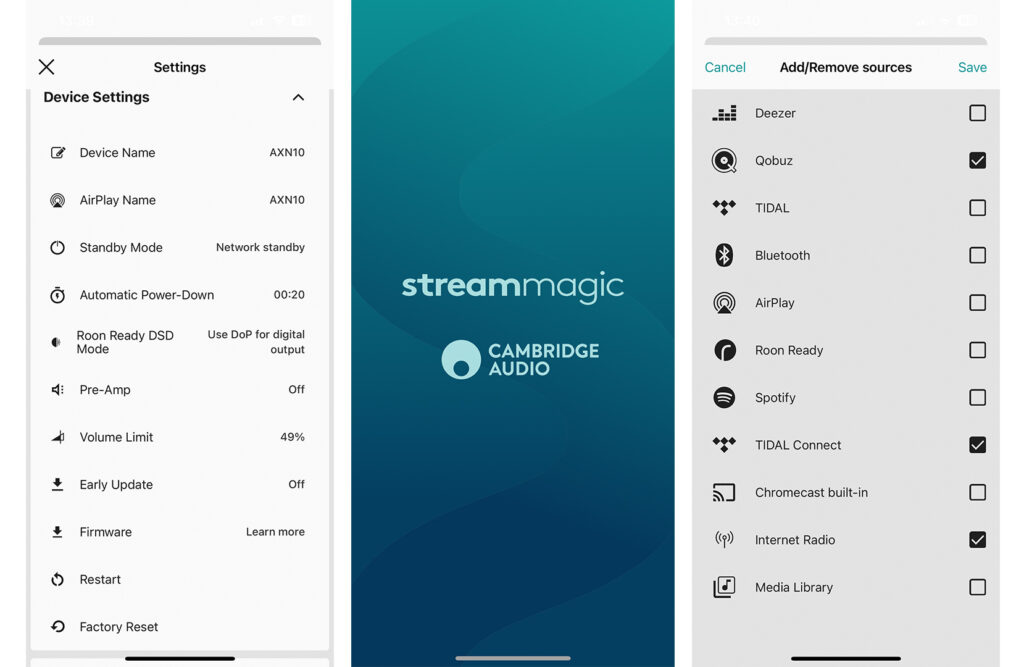
StreamMagic app caters for a range of settings, including a volume limiter and integrating your existing streaming services
Around the back, the connectivity is kept to the essentials, with USB and Ethernet inputs alongside stubby wifi and Bluetooth antennas. Outputs are limited to two digital S/PDIFs (optical and coaxial) and a single set of analogue stereo RCA sockets.
Balanced outputs or more digital inputs would be nice, but given the price and that this is a dedicated network player and not a fully fledged streaming DAC, what you get is what you’d expect.
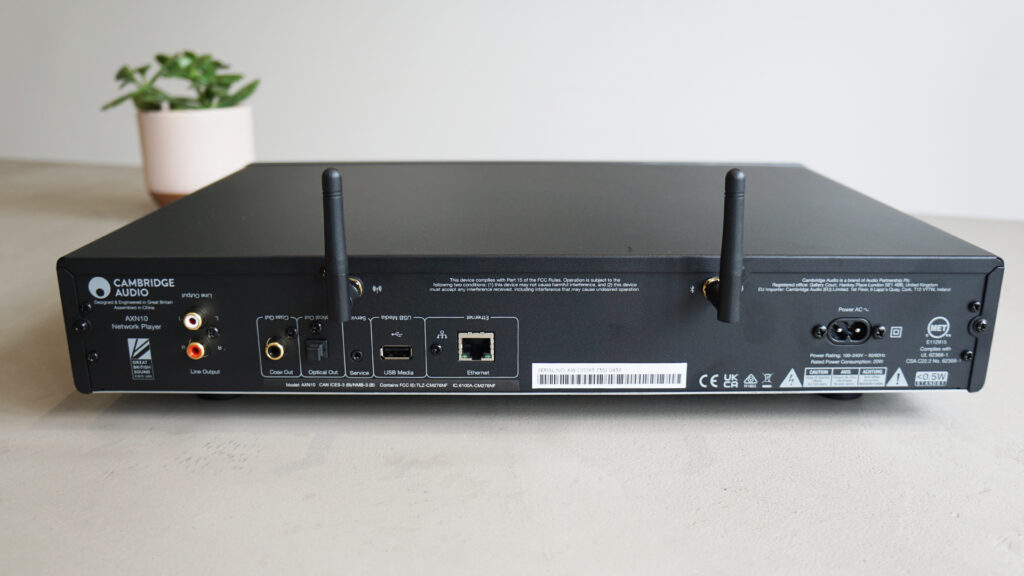
Digital outputs include optical and coaxial alongside analogue RCAs. There’s also a USB port for playing external media
Easy stream
Getting the AXN10 up and running is thankfully easy enough, as the app guides you through each step with the front panel’s LED dictating status.
For connecting wirelessly, you first need to add the AXN10 as an Airplay speaker within your device to make initial contact, which then allows the StreamMagic app to find the device on your home network. Of course for a more stable connection, the wired Ethernet option is the one to go for.
Once you’re connected you can then use the app as a sophisticated controller, including for allocating the AXN10’s four front panel presets to the streaming services of your choosing. Alongside this there’s options for setting the auto power down interval, standby modes and even a preamp mode allowing you to limit the AXN10’s output level.
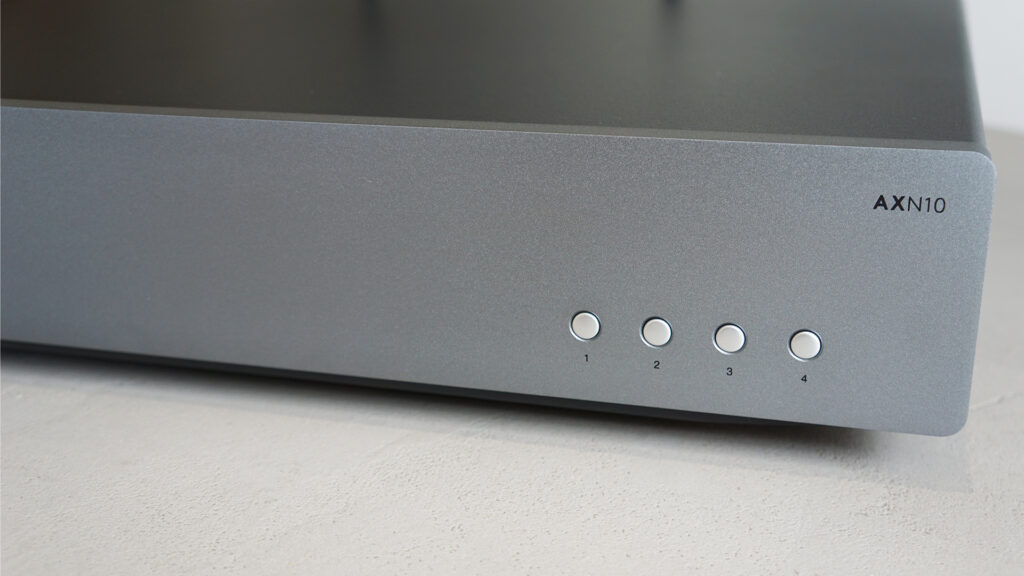
The AXN10’s four front panel source selectors can be customised within the StreamMagic app
Performance
Typically streamers in this price bracket can sound a little staid or lacklustre compared to their more accomplished and costly rivals.
But thankfully that’s not the case with the AXN10 which doesn’t let its price hold back its performance. Hooked up to my Musical Fidelity M6 pre/power amps driving Dynaudio Focus 260 loudspeakers and R.E.M.’s How The West Was Won And Where It Got Us from a 24-bit/192kHz remaster of their New Adventures In HiFi album via Qobuz sounds full of life, thanks to the Cambridge’s impressive dynamics.
Originally designed as a studio warm up track, this song’s a perfect template for the AXN10 to stretch its legs, placing plenty of air and space between instruments, while allowing the punch and weight of the bass guitar and drums to hit home with air-sucking realism.

Minimalist front panel includes a standby button and wifi status light
On more challenging material like PJ Harvey’s I Inside The Old Year Dying at 24-bit/96kHz and the eclectic instrument mix is delivered with palpable intensity, thanks to how the AXN10 doesn’t dilute the track’s rawness or add any sense of compression within the soundstage, so that the energy of the recording can really shine though.
Upping the tempo via the title track from Little Dragon’s Slugs Of Love at 24-bit/44kHz shows the Cambridge Audio has no issues in keeping pace without getting flustered. As the percussion races across the soundstage the AXN10 remains composed and committed to all elements within the mix including vocal imaging, which is pinpoint accurate which is more than impressive at this price point.
In summary
The AXN10 lives up to Cambridge Audio’s cracking value watchwords with ease, thanks to it’s unassuming looks and sensible feature set. This is a streamer that also delivers well beyond its price point in the audio stakes, you could say it offers full width performance at half width prices, earning it recommendation without hesitation.


